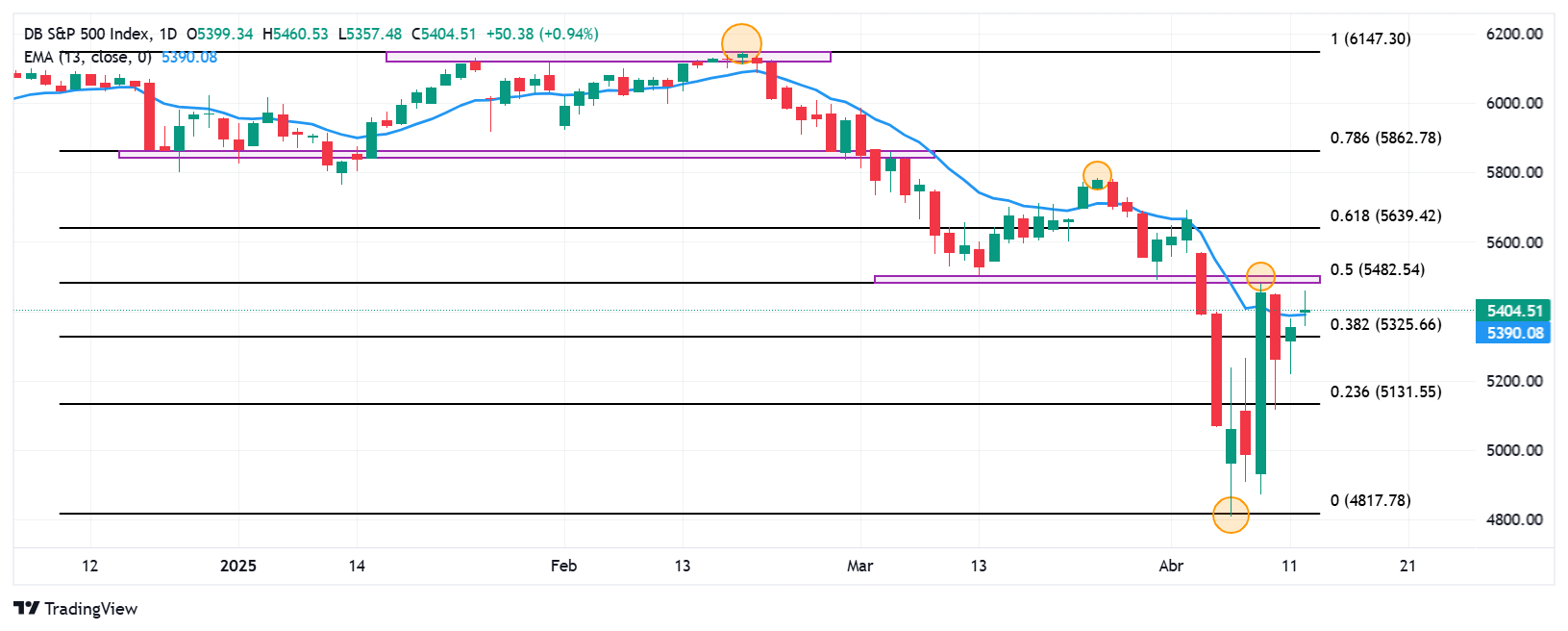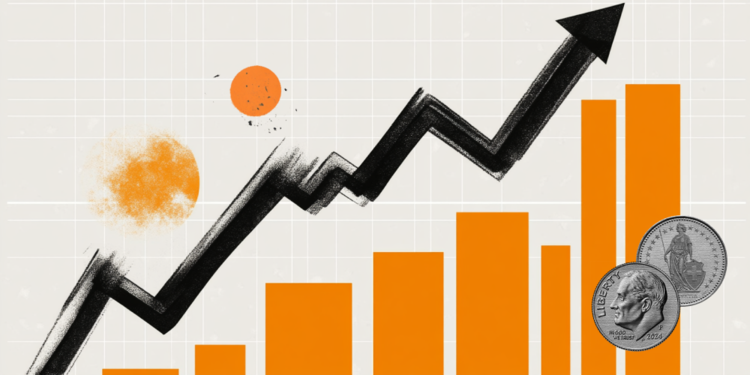- The Dow Jones wins 0.84% daily, quoting currently about 40,527.
- The Nasdaq 100 rises 0.70% today, led by PDD Holdings (PDD).
- The S&P 500 advances 0.94% in the first day of the week, reaching maximum of April 9.
- Scott Besent, US Treasury Secretary, reiterated that they are looking for fair negotiations with their business partners.
- Christopher Waller, a member of FOMC, said tariffs represent a significant shock for the United States economy.
The Dow Jones established a minimum of the day at 40,360, where he found buyers who took the index to maximums of more than a week in 40,765.
The industrial average Dow Jones opened in 40,389, while the Nasdaq 100 technological index began negotiations in 18,808. The S&P 500 began operating in 5,399, taking up the upward perspective in tune with the main stock market rates.
The Dow Jones remains on positive terrain supported by Amgen and The Travelers Companies
The Dow Jones index wins 0.84% on the first day of the week, currently quoting about 40,527.
Amgen’s shares (AMGN) rise 2.78% in the day, reaching maximum of April 7 at 295.18, signing two consecutive sessions with profits.
In the same tonic, The Travelers Companies (TRV) titles rebound 2.33% today, reaching maximum of April 4 at 252.27 $.
In this scenario, the Dow Jones upload 338 points in the day, extending the profits of the Friday session, pointing to the key resistance zone in 42,000.
PDD Holdings and Palantir Technologies lead the profits at Nasdaq 100
The Nasdaq 100 technological index rebounds 0.70% today, consolidating at maximum of April 10 in 18,793.
The values of the PDD Holdings Business Group (PDD), focused on managing electronic commerce companies such as Temu, rises 4.73% on the first day of the week, reaching maximums of April 8 at $ 99.10, spinning two consecutive days on the rise.
On the other hand, Palantir Technologies (PLT) titles earn 4.60% daily, reaching maximums not seen since March 25 in 97.33 $, ending with two consecutive sessions with losses.
The Nasdaq 100 takes up the upward perspective, going up 131 points today, with intentions to reach the following important resistance zone in 20,000.
The S&P 500 quotes on positive terrain with the focus on tariff negotiations
The S&P 500 wins 1.41% daily, visiting maximums of April 9 in 5,460.
The United States Secretary of the Treasury, Scott Besent, reiterated that he is looking for fair negotiations with his commercial partners and does not see an exclusion from the US dollar as a global reserve currency.
At the same time, Christopher Waller, a member of the Federal Open Market Committee, acknowledged that tariffs are the largest shock that affects the United States economy.
The S&P 500 goes up 50 points today, extending Friday’s profits with the sights set in the 5,600 area, a round number close to the maximum of April 3.
Technical Analysis of Dow Jones
The Dow Jones established a short -term support given by the minimum of April 7 in 36,614. Upwards, the closest resistance is located at 42,820 maximum of March 26. The next key resistance is 45,068, a pivot point of January 31.
Dow Jones daily graphics

Dow Jones Faqs
The Dow Jones Industrial Avenge, one of the oldest stock market indexes in the world, consists of the 30 most negotiated values in the United States. The index is weighted by the price instead of capitalization. It is calculated by adding the prices of the values that compose it and dividing them by a factor, currently 0.152. The index was founded by Charles Dow, also founder of the Wall Street Journal. In recent years it has been criticized for not being sufficiently representative, since it only follows 30 companies, unlike broader rates such as S&P 500.
There are many factors that promote the Dow Jones Industrial Average (DJIA) index. The main one is the added performance of the companies that compose it, revealed in the quarterly reports of business benefits. The American and world macroeconomic data also contribute, since they influence investor confidence. The level of interest rates, set by the Federal Reserve (FED), also influences the DJia, since it affects the cost of credit, on which many companies depend largely. Therefore, inflation can be a determining factor, as well as other parameters that influence the decisions of the Federal Reserve.
Dow’s theory is a method to identify the main trend of the stock market developed by Charles Dow. A key step is to compare the direction of the Dow Jones Industrial Avenge (DJIA) and the Dow Jones Transportation Average (DJTA) and just follow the trends in which both move in the same direction. The volume is a confirmation criterion. The theory uses elements of maximum and minimum analysis. Dow’s theory raises three phases of the trend: accumulation, when intelligent money begins to buy or sell; Public participation, when the general public joins the trend; and distribution, when intelligent money abandons the trend.
There are several ways to operate with the DJ. One of them is to use ETF that allow investors to negotiate the DJ as a single value, instead of having to buy shares of the 30 companies that compose it. An outstanding example is the SPDR Dow Jones Industrial Avenge ETF (day). Future contracts on the DJ allow the specular operators about the future value of the index and the options provide the right, but not the obligation, to buy or sell the index at a predetermined price in the future. Investment funds allow investors to buy a part of a diversified portfolio of DJ values, which provides exposure to global index.
Source: Fx Street
I am Joshua Winder, a senior-level journalist and editor at World Stock Market. I specialize in covering news related to the stock market and economic trends. With more than 8 years of experience in this field, I have become an expert in financial reporting.







